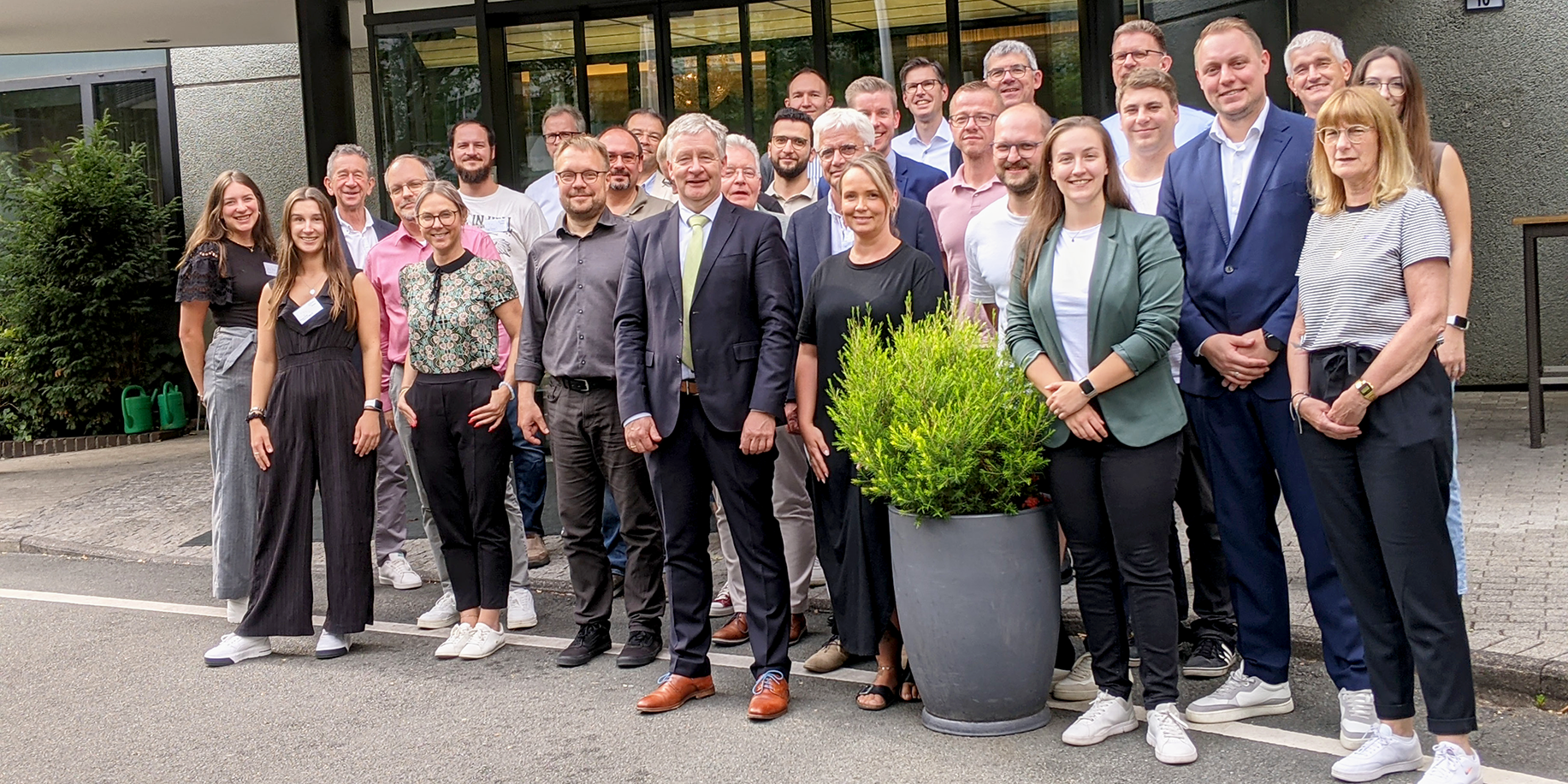
Results from DISTANCE: Successful Networking of Patient Data from Regional Healthcare for Research
DISTANCE Project Closing Meeting on August 27–28, 2025 in Düsseldorf
After four years of intensive work, the Digital Hub DISTANCE is approaching the end of its first funding phase. The aim of the DISTANCE project is to build on the work of the Medical Informatics Initiative (MII) and make data from regional healthcare facilities available for research. The project began on June 1, 2021, and the current funding period will end on September 30, 2025.
To discuss results, experiences, and future perspectives, more than 30 project members gathered in Düsseldorf on August 27 and 28 for a closing event. “The prospect of continued funding by the Federal Ministry of Research, Technology and Space is a strong endorsement of the DISTANCE project and shows that we have done good work,” emphasized project leader Professor Gernot Marx in his welcome speech.
Digital Hub enables cross-sector data exchange
One of the project’s central results is the establishment of a Digital Hub serving as an interface for cross-sector data exchange. Antonia Schmidt, research associate at Fraunhofer ISST, presented the technical progress. The hub enables networking between university institutions, regional hospitals of primary and secondary care, as well as outpatient practices. Eight regional healthcare facilities have been connected using so-called Hub Connect Boxes. Through this infrastructure, data such as demographic information, laboratory values, or clinical findings could be anonymized, collected, and successfully forwarded.
Another milestone: Test data from DISTANCE was successfully linked with the structures of the Medical Informatics Initiative. In the future, the data is expected to be made available for scientific requests via the German Portal for Medical Research Data (FDPG).
PICOS App supports former intensive care patients
Another outcome of the DISTANCE project is the PICOS App, which supports former intensive care patients during their follow-up care. Since the app was primarily developed by Healthcare IT Solutions (HITS) GmbH, Volker Lowitsch, CEO of HITS, presented its development process. The app tests data flows from the Digital Hub while also providing patients with support as they return to everyday life after an intensive care stay.
Around 250 users regularly enter health information such as sleep, physical activity, or blood sugar into the app, giving them an overview of their recovery progress. The app was developed in close cooperation with patients and has been continuously improved—for example, through an automatic reminder function and a 14-day overview. In the future, a version for wearables as well as integration with the electronic patient record (ePA) are possible. Researchers are also expected to use this information to better understand long-term symptoms after intensive care stays and to develop more targeted therapeutic options.
Benefits of DISTANCE outweigh costs
On the second day, Rainer Beckers, CEO of the Center for Telematics and Telemedicine GmbH (ZTG), presented the results of the health economic evaluation of the DISTANCE project. Factors such as personnel costs, infrastructure, and entrepreneurial risk were compared with the potential benefits.
The result is positive: According to the evaluation, the benefits of the Digital Hub outweigh the costs. For example, the number of intensive care cases could be reduced and doctor visits decreased. At the same time, some hurdles remain—particularly regarding the integration of regional rollout partners into the research infrastructure. To ensure long-term success, the added value for all stakeholders will need to be highlighted even more clearly.
Lessons learned provide foundations for follow-up project
Beyond the presentation of results, participants at the event also had the opportunity to reflect on their experiences in interactive workshops on patient participation, further development of the PICOS App, and collaboration with regional healthcare providers as well as other Digital Hubs. The results of these workshops will be evaluated in the coming weeks and incorporated as lessons learned into the planned follow-up project.
The DISTANCE project has demonstrated how a connection between healthcare and research can succeed. With the Digital Hub and the PICOS App, important foundations have been laid that can help ensure patient data is used securely and effectively for research, thereby improving healthcare. To ensure that these results are sustainably implemented in practice, a continuation of the project is currently being planned.

